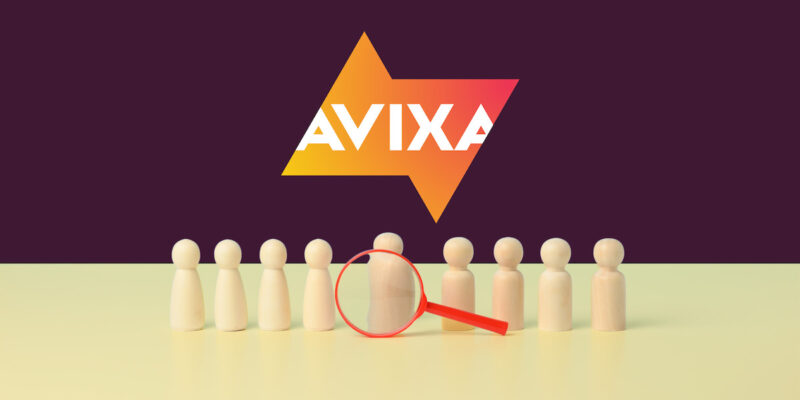Diversity, Inclusion and 2020 New Year’s Resolutions for the AV Industry
 Happy New Year, friends. I’ve been too absent from these spaces as I’ve left one job, settled into a new one and let the rhythms of life get in the way. Let’s take it as a New Year’s resolution that I’ll be back, with more to share. As we’re talking about resolutions, we’ll start with one for the industry. First, I want to talk briefly about the problem with diversity discussions.
Happy New Year, friends. I’ve been too absent from these spaces as I’ve left one job, settled into a new one and let the rhythms of life get in the way. Let’s take it as a New Year’s resolution that I’ll be back, with more to share. As we’re talking about resolutions, we’ll start with one for the industry. First, I want to talk briefly about the problem with diversity discussions.
Those who follow know me to be a supporter of diversity in an industry which remains too white, too male, too old – and I say that as a white male rapidly approaching the half-century mark. What frustrates me about the discourse? Too much of it focuses on why we need diversity. On how diverse workforces are more productive. On how they are more creative. And yes, on how there is a moral imperative to treat everyone equitably regardless of gender, race, religion, national origin, gender identity, sexual orientation or any other aspect of one’s personal identity. We know that diversity at the highest levels provides an example and an aspiration, and tells everyone entering the field that someone like them can accomplish anything. We all know this.
At least most of us do.
And this leads to my problem – the discussion of “why” has, by now, run its course. Yes, there are still some who don’t get it and profess “color blindness” and want to pretend that we already live in a perfect meritocracy. They’re wrong, but a small minority. They’re the ones we’ll likely never convince. The rest of us know that a diverse workforce is in our best interest, which means that we need to change the conversation.
We need to stop asking “why?” and start asking “how?”
There are, of course, actions to be taken. There are actions that ARE being taken – by AVIXA, by companies and by us in the community. What are we doing, and what can you do? Let’s make some late New Year’s resolutions.
Resolution 1 – Use Language Wisely
Anyone who’s followed me for any time knows that I love language as a form of art and as a tool. For the sake of supporting diversity, all of us can choose words for inclusivity. This might, in some senses, take practice but aside from that, it’s completely free. It’s the least we can do.
For an example, a rep for a particularly heavy product once told a group that they recommend a crew of three men to mount it. Yes, you told me that it’s heavy, but you also told me that you think a technician needs to be male. It’s a tiny sliver of exclusion where one is needed.
A better statement? Three technicians. A technician plus two helpers. A crew of three.
So, for the new year, join me in resolving not to say “men” or “guys” or “workmen” when you could say “technicians” or “professionals” or “workers.”
Resolution 2 – Pronouns. The very least we can do
If you look at my Twitter bio or even my bio on here, you’ll see that I list my pronouns as “he/him”. Fellow AV professional and friend Hope Roth lists hers as “she/her.” You’ll see the same with a handful of others. Why do we do this? We’re both cisgender individuals with names and faces that match what you’d expect from our traditional gendered pronouns. I started because a transgender acquaintance made that point that not everyone uses “expected” pronouns and for cisgender people to state ours normalizes it, allowing those who really need to state their pronouns to not stand out as much.
Of all the ways to fight bias, this takes perhaps the smallest amount of effort. When I say that it’s the least one can do to add pronouns to a bio, I mean that in every sense. Add maybe a dozen and a half characters to make a statement about respect for gender identity. That’s an easy one.
A digression here – please let us all resolve to not make lazy jokes about gender identity. Specifically, if the “gender” field allows you to fill in your own then, for the love of all that is holy, resist the temptation to be “clever” and say “attack helicopter” or any other form of combat aircraft. Resist the urge to select something cute or clever for your pronouns. Why? Because there are people who legitimately struggle to have their identities respected, and making light of it in this way sends the message that you don’t care and don’t take their struggles seriously.
Just don’t.
Resolution 3 – Diversify our Faces
I’m fortunate in that my career has taken me to a company — engineering firm Syska-Hennessy — that shares these values, and one which is taking concrete steps to — for starters — improve gender balance in the firm and the industry. One factor that they identified is that the very hiring process can feel unwelcoming and exclusionary if all of the representatives of a firm met by potential candidates are white men. Part of Syska’s initiative to increase diversity is to leverage what diversity we already have to make sure that the face of the company candidates see is not exclusively white and exclusively male.
This isn’t just about hiring. It’s about social media, it’s about advertising, it’s about which staff photos are highlighted on a website. Everything about the public face of a company sends a message, be that intentional or not. If we want to improve our diversity, that message can’t be that any hire who doesn’t fit the dominant group will be an outlier. We need to send them the message that they’ll fit in.
Look, for example, at the AVIXA Diversity Council postcard created last year. Note how many faces they were able to find who are not white, are not male. Let’s all change the perceived face of the industry, as a step towards changing the actual face.
Resolution Four – Shut Up and Listen
This is a big one, especially for people like me who have, I will confess, become accustomed to being heard. The above is important to me, but there’s one thing to remember:
It isn’t about me. And if you reading this and you’re a member of a demographic well-represented in the industry, it isn’t about you either.
There are things we all need to address that are outside some of our lived experiences. Non-traditional gender identities. Disabilities. Mental illnesses. It’s very easy for those of us not directly touched by these things to, even with the very best of intentions, go astray when our assumptions are wrong.
So let’s stop making assumptions.
Read the writings of people outside your group, whichever group that is. Follow them on social media. Ask questions if they signal that questions are welcome.
Most of all, listen.
Let that be our last and biggest New Year’s resolution – to take some moments to quiet our own voices so we can hear others, and adjust our expectations and actions accordingly.
Happy New Year. Let’s resolve to do better.




